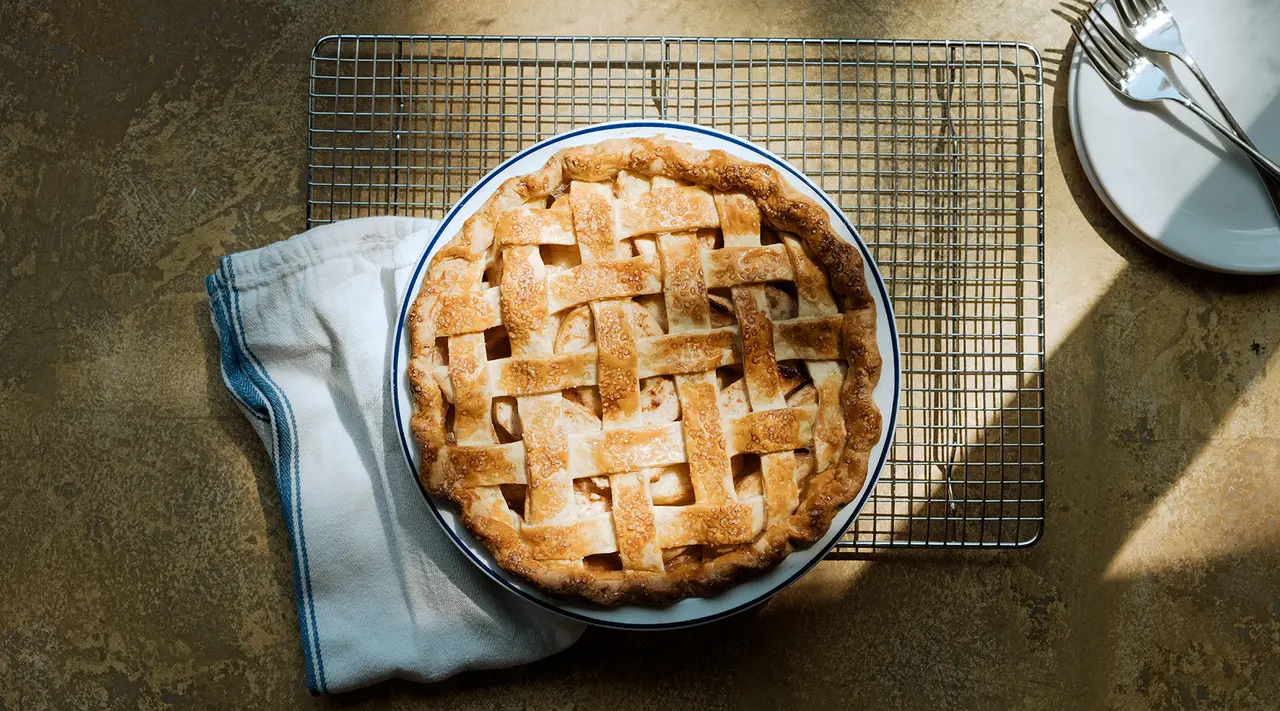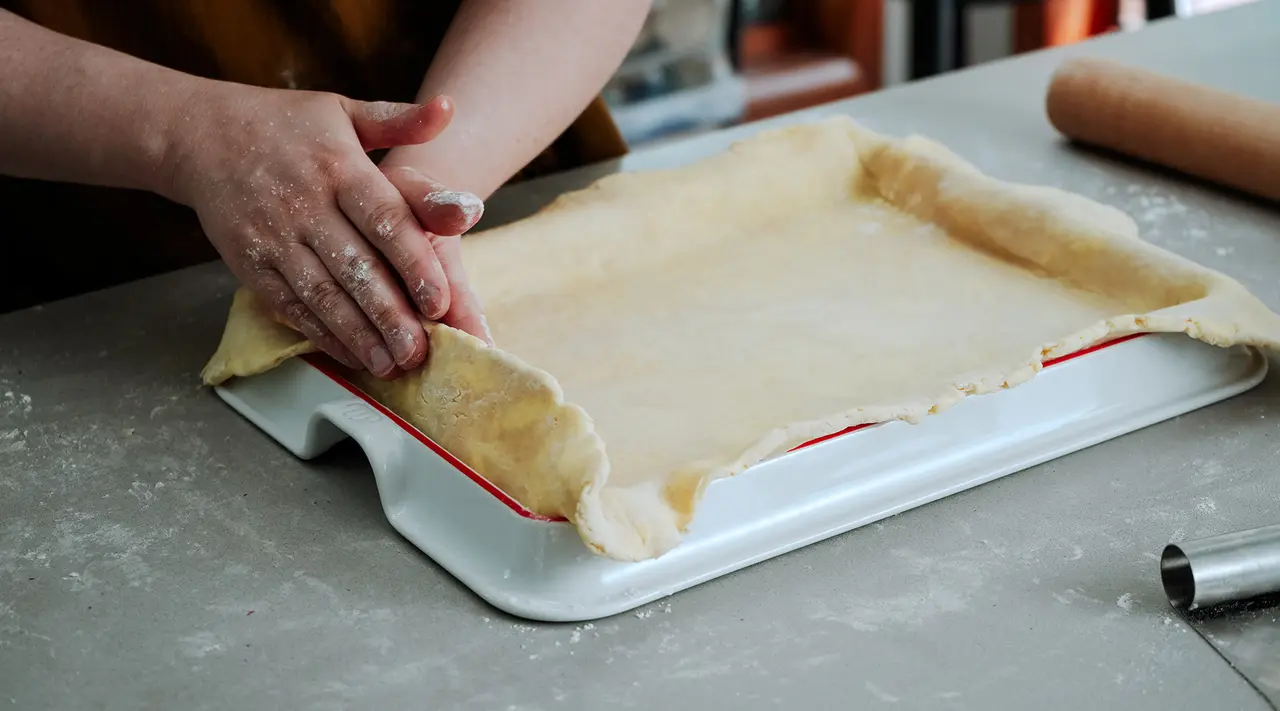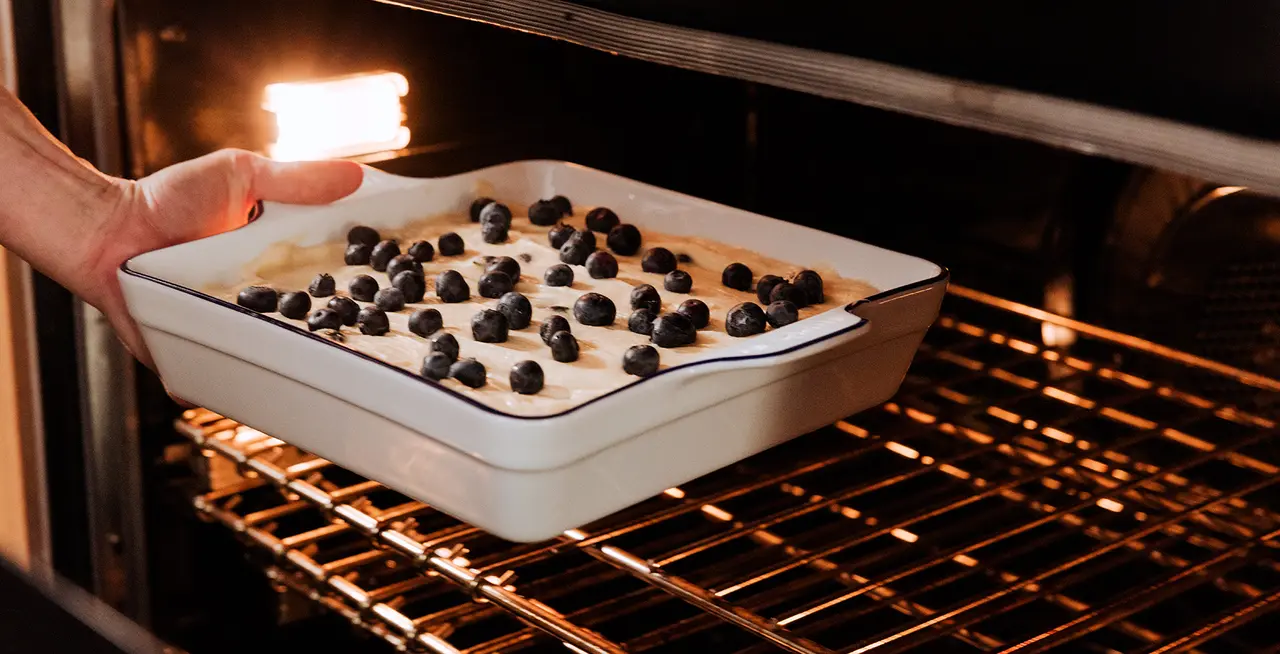If you’ve ever had to sweep up the shattered remains of bakeware, ceramic coffee mugs, or the beloved stoneware French press that everyone swears they didn’t drop, you’ve probably witnessed the effects of something called thermal shock. Caused by suddenly subjecting hot objects to drastically cold temperatures (or vice versa), the stress of thermal shock often results in the object fracturing or splitting—even exploding. It’s an extremely common phenomenon that nonetheless poses a very real risk to your safety—and to your grandmother’s vintage plates.
The good news is you can easily prevent this tragedy by being just a bit more conscientious when you cook. To help you avoid burns, cuts, and ruined cakes, we’ve put together this comprehensive guide to thermal shock—what it is, which types of cookware are most susceptible to it, and how you can avoid it while cooking.
What Is Thermal Shock?

Thermal shock occurs when different parts of an object—like a glass pan or ceramic plate—expand or contract unevenly due to sudden temperature change, whether hot to cold or cold to hot. This unexpected expansion or contraction puts strain on the object, to the point that it may crack, warp, or even shatter, depending on the object’s tensile strength—i.e., its ability to withstand stress without breaking.
If an object is thermal shock-resistant, that typically means that it’ll have better tensile strength and will expand or contract more evenly when it’s heated or cooled. Since so much of cooking involves the rapid heating and cooling of ingredients or cookware, most people’s first encounter with thermal shock is likely going to be in the kitchen.
How Does Thermal Shock Affect Cookware?

Different types of cookware react to thermal shock in different ways, depending on how much tensile strength they have. For example, while you’re unlikely to see aluminum sheet pans or low-quality stainless steel skillets crack in half due to thermal shock, they can still be prone to warping.
On the other hand, naturally brittle materials like glass, porcelain, and ceramic are more likely to crack or even shatter in response to sudden temperature changes, which is why most manufacturers advise letting a freshly-baked pie cool down before putting it in the fridge.
Some materials, like Made In’s Bakeware and Plateware, are thermal shock-resistant by design—in those instances, thermal shock doesn’t have much impact at all.
How to Prevent Thermal Shock in Cookware

Thermal shock is incredibly common, particularly if you’re someone who cooks or bakes on a daily basis, so don’t feel bad if it happens. However, to avoid the heartbreak and danger of shattered baking dishes, warped skillets, or—heaven forbid—cracked Enameled Cast Iron, here are a few ways to avoid thermal shock.
- Always remember to let a hot pot or pan cool to room temperature before putting it in the sink to wash, and use lukewarm or room temperature water.
- Allow your food to temper (come to room temperature) before putting it in the pan, as this ensures everything is at roughly the same temperature before adding more heat.
- Let your cookware heat up slowly, rather than immediately cranking the heat all the way—this is especially important with cookware made from glass, ceramic, and other more brittle materials.
- When heating up a frozen casserole or cold leftovers from the fridge, it’s best to transfer them to a thermal shock-resistant vessel (like our Baking Dish) before putting them in a hot oven or on the stove.
- Never put a hot pot, pan, or plate directly into the fridge or freezer if it’s not thermal shock-resistant.
The most fail-proof way to prevent thermal shock, of course, is to buy plateware and cookware that’s thermal shock-resistant to start with. Plateware and bakeware that’s been fully vitrified (heated to boiling point before being fired in a kiln) will typically be stronger and more resistant to thermal shock. When buying sheet pans, go for ones made of thick, high-gauge aluminum, and sturdy rolled edges.
What to Do If Your Cookware Experiences Thermal Shock

It’s pretty easy to tell when a glass baking dish or ceramic pot has undergone thermal shock. There’ll usually be one or more fine cracks visible, if it’s not broken completely. A warped pot or pan will have a slightly or dramatically uneven surface, and will probably wobble a bit when you place it on your stove, an oven rack, or another surface where it should be sitting completely flat. You can sometimes hear a hollow “boing” sound when you put a hot pan in the sink or a cold pan in the oven—this is the sound of your pan warping due to the sudden temperature change.
While gently warped sheet pans and skillets are generally okay to cook with, major thermal shock damage can affect your pan’s ability to properly heat food, as the bottom will no longer sit flush with the burner or other heating element. It’s also not a good idea to cook with cracked pots and pans, as they’re now much more likely to break entirely (never ideal, but especially dangerous if you’re working with bubbling hot stew or fry oil). Plus, the cracks can harbor bacteria.
While there’s not much you can do to fix cracked glass or ceramic other than replacing it, you can reshape a warped sheet pan using this method: first, heat your pan in a 200F oven for about ten minutes, or until it feels warm to the touch. While it’s heating up, lay a towel down on a workbench or similar hard, flat surface. Place your heated pan on the towel upside down, cover with another towel to prevent scratching, then tap gently with a meat mallet or similar object to reshape.
Ready to Cook?
Now that you’re armed with the facts on thermal shock and how to avoid it, you’re ready to face the world of frozen casseroles and hot sheet pans without fear of disaster. To briefly recap—as long as you know which materials are most vulnerable to cracking and warping, and you’re careful to let cookware heat up or cool down slowly rather than subjecting it to sudden temperature changes, you’re pretty much in the clear.
No matter how careful you are, however, you’ll be better equipped to avoid thermal shock if you stock up on high-quality kitchenware. All of Made In’s Plateware and Bakeware is thermal shock-resistant, so they can travel seamlessly from fridge or freezer to oven without cracking. Similarly, our Sheet Pans are fully rimmed and made with heavy-gauge aluminum to resist warping. The only thing you’ll have to worry about now is keeping your butter cold enough for flaky pie crust.






























